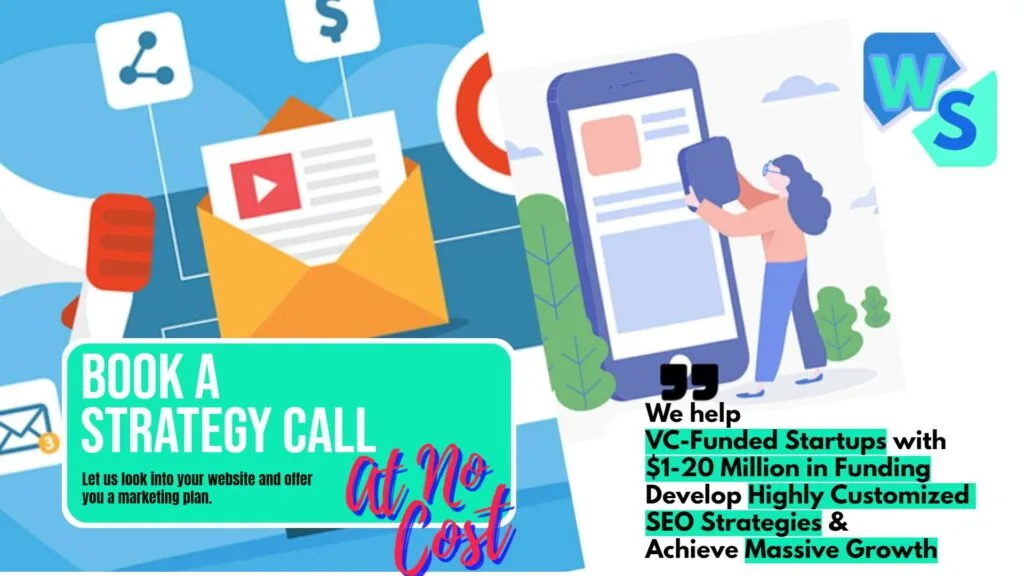This Article has been revised, edited and added to, by Poulomi Chakraborty.
- Mobile Optimization: Ensuring Seamless Experiences
- The Critical Nature of Mobile-First Design
- Enhancing User Experience Through Responsive Design
- Speed Optimization: Keeping Pace with Mobile Users
- Local SEO: Capturing the Mobile Traveler
- Implementing AMP and PWA Technologies
- Continuous Testing and User Feedback
- Embracing Mobile Payments for Seamless Transactions
- The Path Forward in Mobile Optimization
- Local SEO: Capturing the Nearby Adventurers
- Optimize Your Visual Content: Show, Don’t Just Tell
- Harness the Power of Internal Linking
- Fresh and Engaging Content: The Heartbeat of SEO
- Keyword Research: Targeting the Right Travelers
- Enhance User Experience (UX): Beyond Aesthetics
- Conclusion
In the vast digital ocean where countless travel websites sail, standing out becomes paramount. Every travel website wishes to be the beacon for wanderlust souls, guiding them to their next adventure. However, the key to that visibility lies in effective Search Engine Optimization (SEO). While a comprehensive SEO strategy is pivotal for long-term success, there are quick wins that can give your travel website a significant boost. Dive in as we unveil these rapid yet impactful SEO strategies tailored specifically for the dynamic world of travel.
Mobile Optimization: Ensuring Seamless Experiences

The Critical Nature of Mobile-First Design
In today’s digital age, a mobile-first approach is not just a recommendation; it’s a necessity. For travel startups, recognizing this importance is the first step towards creating a platform that caters to the modern traveler’s needs.
A mobile-first design ensures that your website is optimized for smaller screens, providing an intuitive and seamless user experience from the moment a traveler encounters your brand.
This approach is about prioritizing the mobile experience in your design process, acknowledging that a significant portion of your audience will interact with your brand through a mobile device.
Enhancing User Experience Through Responsive Design
The cornerstone of mobile optimization is a responsive web design that adapts to any screen size. This flexibility ensures that your website is accessible and navigable on a wide range of devices, from smartphones to tablets.
A responsive design eliminates common frustrations such as text that’s too small to read, images that don’t load properly, and navigation that’s difficult to use on a touchscreen. By providing a frictionless browsing experience, you’re not only improving user satisfaction but also boosting the likelihood of conversions.
Speed Optimization: Keeping Pace with Mobile Users
Mobile users expect quick, efficient access to information, making page load speed a critical factor in user satisfaction. Improving your website’s speed can significantly enhance the user experience, reducing bounce rates and improving your site’s overall performance in search engine rankings.
Techniques such as optimizing images, leveraging browser caching, and minimizing code can help speed up your website. Additionally, consider implementing Accelerated Mobile Pages (AMP) for critical pages of your website to provide instant loading for mobile users.
Local SEO: Capturing the Mobile Traveler
For travel websites, local SEO is a powerful tool to attract mobile users. Optimizing your site for local search terms and listings can drive traffic and conversions from travelers looking for experiences and accommodations near them.
Ensure your business is listed accurately on Google My Business and other relevant directories, and incorporate local keywords into your site’s content. Creating location-specific pages with high-quality, relevant content can also improve your visibility in local searches.
Implementing AMP and PWA Technologies
Accelerated Mobile Pages (AMP) and Progressive Web Apps (PWA) represent advanced technologies that further enhance the mobile user experience. AMPs are designed to load almost instantly, providing an efficient way to deliver content to mobile users.
PWAs, on the other hand, offer a high-quality, app-like experience in a mobile browser, including features like offline access and push notifications. By adopting these technologies, travel startups can significantly improve engagement and keep users coming back.
Continuous Testing and User Feedback
Mobile optimization is an ongoing process that requires continuous testing and iteration. Utilize tools such as Google’s Mobile-Friendly Test to evaluate your website’s performance on mobile devices regularly.
Additionally, gather and analyze user feedback specifically related to the mobile experience. Understanding the challenges and frustrations your users face can guide you in making meaningful improvements.
Embracing Mobile Payments for Seamless Transactions
Incorporating easy-to-use mobile payment options is essential for converting mobile visitors into customers. Simplifying the booking and payment process on mobile devices can significantly increase conversion rates.
Ensure that your website supports a variety of mobile payment systems, from credit cards to digital wallets, to accommodate the preferences of a diverse user base.
The Path Forward in Mobile Optimization
For travel startups, investing in mobile optimization is investing in the future. As mobile usage continues to grow, the importance of delivering a seamless, responsive, and fast mobile experience cannot be overstated.
By adopting a mobile-first design philosophy, leveraging cutting-edge technologies, and continuously refining the mobile user experience based on data and feedback, travel startups can achieve significant SEO wins. These efforts not only enhance visibility and user satisfaction but also drive conversions, setting the foundation for long-term success in the competitive travel industry.
Local SEO: Capturing the Nearby Adventurers
For travel startups looking to make an immediate impact, focusing on local SEO can unlock a treasure trove of opportunities. Local SEO targets individuals searching for places, activities, and accommodations in their vicinity or in specific locales. By optimizing your website for local search queries, you can attract adventurers who are ready to explore or book, often with a higher intent to purchase. This approach is crucial for standing out in specific markets and capturing the attention of travelers who are looking for immediate, localized experiences.
Building a Solid Local SEO Foundation
Claiming and Optimizing Your Google My Business Listing
Your Google My Business (GMB) profile is the cornerstone of your local SEO strategy. Claiming and optimizing this listing improves your visibility in Google’s local search results and Google Maps. Ensure that your business information is accurate and comprehensive, including your address, phone number, business hours, and categories. Regularly update your profile with high-quality photos and respond promptly to reviews to engage with your audience and enhance your profile’s credibility and attractiveness.
Encouraging Customer Reviews
Reviews are a powerful factor in local SEO and purchasing decisions. Encourage satisfied customers to leave positive reviews on your GMB profile and other relevant platforms like TripAdvisor or Yelp. Implement strategies to make leaving reviews easy and intuitive, such as sending follow-up emails after a visit with direct links to your profiles. Responding to both positive and negative reviews demonstrates your commitment to customer satisfaction and can improve your rankings and visibility.
Advanced Strategies for Enhancing Local Visibility
Local Content Creation
Creating content that highlights local attractions, events, and experiences can significantly boost your local SEO efforts. Use your blog or website’s content section to feature articles, guides, and videos that cater to those interested in local adventures. Use local keywords strategically throughout your content to increase its visibility in local search results. This not only helps with SEO but also establishes your brand as a local authority, building trust with potential customers.
Leveraging Local Backlinks
Backlinks from reputable local websites can significantly boost your site’s authority and local search rankings. Partner with local businesses, tourism boards, and media outlets to create link-building opportunities. Hosting local events or sponsoring community activities can also generate local interest and backlinks. This strategy not only improves your SEO but also enhances your brand’s presence and reputation in the local community.
Utilizing Local Keywords
Incorporating local keywords into your website’s meta tags, headers, and content is vital for local SEO success. Research and identify keywords that potential customers are using to find local travel experiences and accommodations. Tools like Google’s Keyword Planner can help you discover local search terms related to your business. Be strategic in your use of these keywords, ensuring they are integrated naturally and relevantly throughout your site.
Monitoring and Adapting to Local SEO Trends
Local SEO is continually evolving, with search algorithms frequently updating. Stay informed about the latest trends and algorithm changes to adapt your strategies accordingly. Use analytics tools to monitor your website’s performance in local search results and identify areas for improvement. Regularly reviewing and adjusting your local SEO strategy ensures you remain competitive and visible to your target audience.
The Strategic Advantage of Local SEO
For travel startups, mastering local SEO is not just about improving search rankings; it’s about connecting with your community and becoming the go-to source for local travel experiences. By building a robust local presence, encouraging engagement through reviews, creating relevant local content, and leveraging backlinks, you can effectively capture the attention of nearby adventurers. As you refine your local SEO strategies, you’ll not only enhance your visibility but also foster stronger relationships with your local audience, laying the foundation for long-term success in the travel industry.
Optimize Your Visual Content: Show, Don’t Just Tell

Visual content is the heart of the travel industry’s online presence. It has the power to transport viewers to distant locations, inspire wanderlust, and ultimately, drive bookings. For startups in the travel domain, leveraging high-quality visual content is not just an option—it’s a necessity. The right images and videos can set you apart from competitors, capture the imagination of your audience, and communicate the unique experiences your brand offers.
Crafting Compelling Visual Narratives
Selecting the Right Images
Choosing the right images is crucial. Each photo or graphic should tell a part of your brand’s story, showcasing the experiences that travelers can expect. Focus on authenticity and diversity in your visual selections to appeal to a broad audience. High-resolution images that capture the beauty and uniqueness of your destinations are essential. Consider the emotions you want to evoke in your audience and select images that convey those feelings.
Creating Engaging Videos
Videos offer a dynamic way to engage potential travelers, providing a richer, more immersive experience than static images alone. Develop short, compelling videos that highlight key attractions, unique experiences, and testimonials from satisfied customers. Ensure that your videos are optimized for web viewing, with attention to file size and format for seamless playback across devices.
Optimizing Visual Content for SEO
Utilizing Alt Text and File Names
Every image and video on your website offers an opportunity to improve your SEO through thoughtful optimization. Use descriptive, keyword-rich file names and alt text for each piece of visual content. This not only improves accessibility for users with visual impairments but also helps search engines understand and index your content more effectively, leading to better visibility in search results.
Leveraging Image Sitemaps
For Google and other search engines to discover all the visual content on your site, consider creating an image sitemap. This can be especially beneficial for websites that heavily rely on images to attract and engage visitors. An image sitemap makes it easier for search engines to find and index your images, potentially boosting your site’s visibility.
Enhancing User Experience with Visual Content
Balancing Quality and Performance
While high-quality images and videos are vital, they must be balanced with website performance. Optimize your visual content for fast loading times by compressing images and using responsive design techniques to ensure that your site remains quick and accessible on all devices. Tools like Google’s PageSpeed Insights can help identify opportunities to improve your site’s loading times.
Interactive Visual Experiences
Consider incorporating interactive visual content, such as 360-degree tours, interactive maps, and virtual reality experiences. These innovative formats can significantly enhance the user experience, providing an engaging way to explore destinations and services. They also encourage users to spend more time on your site, which can positively impact your SEO rankings.
Monitoring and Measuring the Impact
Track the performance of your visual content through analytics to understand what resonates with your audience. Pay attention to metrics like page views, bounce rates, and conversion rates to gauge the effectiveness of your visual content strategy. Use this data to refine your approach, focusing on the types of images and videos that drive the most engagement and conversions.
A Picture is Worth a Thousand Clicks
In the competitive landscape of the travel industry, visual content is a critical component of your SEO and marketing strategy. By carefully selecting and optimizing images and videos, leveraging the latest technologies for immersive experiences, and continuously measuring their impact, travel startups can significantly enhance their online presence. Remember, when it comes to capturing the attention of potential travelers, showing is not just better than telling—it’s essential.
Harness the Power of Internal Linking
Internal linking, the practice of linking to other pages within your website, is a powerful yet often underutilized SEO strategy in the travel industry. It not only aids in website navigation but also establishes a hierarchy of information, helping search engines understand the relative importance of pages. For travel startups, mastering internal linking can enhance user experience, improve site structure, and boost your website’s ranking in search engine results pages (SERPs).
Strategic Implementation of Internal Linking
Creating a Logical Site Structure
Begin with a clear, logical site structure that reflects your content’s hierarchy. This structure guides your internal linking strategy, ensuring that links are intuitive and add value to the user’s journey. A well-organized site encourages longer visits and helps search engines index your content more effectively, which is crucial for improving visibility.
Utilizing Anchor Text Wisely
Anchor text, the clickable text in a hyperlink, is vital for informing both users and search engines about the page you’re linking to. Use descriptive, keyword-rich anchor text that accurately reflects the linked page’s content. This not only enhances user experience but also helps search engines understand the context and relevance of links, further boosting your SEO.
Enhancing User Experience Through Internal Links
Guiding Users to High-Value Pages
Use internal links to guide visitors toward high-value pages, such as detailed guides, booking pages, or special offers. This not only improves navigation but also increases the likelihood of conversions by making important pages more accessible. Consider the user’s intent and journey on your site, and place links where they are most relevant and helpful.
Reducing Bounce Rates with Related Content
Linking to related content can significantly reduce bounce rates by encouraging visitors to explore your site further. For example, a blog post about the best beaches in a region could link to related articles on water sports or beachside accommodations. This not only enriches the user’s experience but also signals to search engines that your site is a valuable resource, which can positively impact your rankings.
Boosting Page Authority with Internal Linking
Distributing Page Authority Throughout Your Site
Internal linking helps distribute page authority throughout your site, allowing you to boost the ranking potential of newer or less visible pages. By linking from high-authority pages to pages that need a boost, you can help improve their visibility in SERPs. This strategic distribution of link equity is crucial for elevating the overall authority of your site.
Leveraging Landing Pages
Landing pages for specific destinations or themes offer excellent opportunities for internal linking. By linking to these pages from various content pieces, you can consolidate their authority and improve their ranking for targeted keywords. This approach is particularly effective for travel startups looking to dominate niche markets or specific travel segments.
Monitoring and Optimizing Your Internal Linking Strategy
Regularly review and optimize your internal linking strategy to ensure it remains effective. Use tools like Google Analytics and Google Search Console to track how users navigate your site and how search engines are indexing it. Look for opportunities to add or adjust links based on user behavior and SEO performance.
Linking Internally, Thinking Globally
For travel startups, internal linking is not just about improving SEO; it’s about providing a seamless and intuitive user experience. By strategically implementing internal links, you can guide visitors through your site, encourage deeper engagement, and significantly enhance your site’s visibility and ranking in search results. Remember, a well-thought-out internal linking strategy can turn a good website into a great one, helping you stand out in the competitive travel industry.
Fresh and Engaging Content: The Heartbeat of SEO

In the competitive realm of the travel industry, content is not just king; it’s the very heartbeat of SEO. Fresh, engaging content attracts visitors, encourages them to stay longer, and prompts them to share, which in turn boosts your site’s SEO performance. For travel startups, producing content that resonates with your audience is crucial. It’s about crafting stories that inspire wanderlust, providing valuable information that aids planning, and sharing insights that enhance travel experiences.
Crafting a Content Strategy That Engages and Converts
Understanding Your Audience
Before you start creating content, it’s imperative to have a deep understanding of your target audience. Identify their interests, pain points, and the types of content they engage with most. This understanding will guide your content strategy, ensuring that you produce material that resonates and genuinely adds value to your audience’s travel planning process.
Diversifying Your Content Mix
A dynamic content strategy includes a mix of formats – from blog posts and articles to videos, infographics, and podcasts. Each format has its strengths and caters to different preferences within your audience. For instance, articles and blog posts are great for SEO and providing in-depth information, while videos and infographics can make complex information more digestible and shareable.
SEO Best Practices for Content
Keyword Optimization
Integrate relevant keywords naturally into your content to improve your visibility in search results. Use keyword research tools to identify terms your target audience is searching for, but remember, keyword stuffing can harm your SEO. Instead, focus on creating content that seamlessly incorporates these terms, adding value and readability.
Regular Content Updates
Search engines favor websites that are regularly updated with new content. Set a consistent publishing schedule to keep your site fresh and encourage repeat visits. Updating existing content also plays a key role in keeping your site relevant and can boost your SEO by showing search engines that your site is actively maintained.
Leveraging Content to Build Links
Guest Blogging and Collaborations
Collaborating with influencers, travel bloggers, and other industry partners for guest posts can broaden your reach and build backlinks to your site. These partnerships not only enhance your content offering but also improve your site’s authority and ranking.
Creating Shareable Content
Produce content that viewers want to share across their networks. This could be unique travel tips, stunning photography, or compelling travel stories. Shareable content increases your visibility, drives traffic, and can lead to natural link building as other sites reference your work.
Measuring Content Performance
Utilize Analytics
Use analytics tools to track the performance of your content. Understand which pieces are driving traffic, engagement, and conversions. This data allows you to refine your content strategy, focusing on what works best for your audience and your SEO goals.
User Feedback
Gather feedback directly from your audience through comments, social media, and surveys. User feedback can provide insights into content preferences and areas for improvement, helping you tailor your future content to better meet the needs of your audience.
Content as the Cornerstone of SEO Success
For travel startups, investing in a robust content strategy is investing in the long-term success of your SEO efforts. By understanding your audience, diversifying your content mix, adhering to SEO best practices, leveraging content for link building, and measuring performance, you can create a content ecosystem that not only ranks well in search engines but also genuinely engages and converts your target audience. Remember, at the heart of every successful travel website is content that inspires, informs, and captivates.

Related: Check out our free SEO suite

Keyword Research: Targeting the Right Travelers
Keyword research is the cornerstone of effective SEO strategy, especially in the competitive travel industry. It involves identifying the terms and phrases potential customers use to search for travel services and information online. For travel startups, mastering keyword research means unlocking the ability to target the right travelers—those who are most interested in what you have to offer. It’s about aligning your online content with the queries of your desired audience, ensuring your website appears in front of them at the right moment.
Developing a Keyword Strategy Tailored to Travel
Identifying Niche Keywords
In the vast ocean of travel-related searches, niche keywords are your secret weapon. These are specific phrases that precisely match the unique offerings of your travel startup. Whether it’s eco-tourism, luxury travel, adventure sports, or cultural tours, identifying niche keywords related to your specialization can help you attract a highly targeted audience. Use tools like Google’s Keyword Planner, SEMrush, or Ahrefs to discover keywords that are relevant to your niche but have lower competition.
Analyzing Search Intent
Understanding the intent behind search queries is crucial. Travelers might be in different stages of their journey—some are just dreaming, others are planning, and some are ready to book. Tailoring your content to match these different intents can significantly improve your visibility and relevance. For instance, “best time to visit” or “things to do in” are likely queries from travelers in the planning phase, while “book” or “tickets to” indicate readiness to purchase.
Implementing Keywords into Your SEO Strategy
Optimizing Website Content
Once you’ve identified your target keywords, the next step is to incorporate them into your website. This includes titles, meta descriptions, headings, and the body of your web pages and blog posts. However, it’s vital to maintain natural language and readability. Overuse of keywords, or keyword stuffing, can harm your SEO efforts.
Creating Content Hubs
A content hub is a centralized section on your website where visitors can find a wealth of information on a specific topic. For travel startups, creating content hubs around your niche keywords can significantly boost your authority and rank for those terms. For example, if you specialize in eco-tourism, a content hub could include guides on sustainable travel practices, eco-friendly accommodations, and conservation projects.
Advanced Techniques for Keyword Optimization

Utilizing Long-Tail Keywords
Long-tail keywords are longer, more specific phrases that tend to have lower search volumes but higher conversion rates. For travel sites, they offer the opportunity to capture highly targeted traffic. For example, “luxury vegan eco resorts in Bali” might attract fewer searches than “hotels in Bali,” but the visitors it attracts are far more likely to convert.
Local SEO Keywords
For travel startups focusing on specific destinations or local tours, local SEO keywords are invaluable. Including the names of cities, regions, or attractions in your keywords can help attract travelers looking for experiences in those areas. Make sure to also optimize your Google My Business listing and encourage reviews to enhance your local search presence.
Tracking and Refining Your Keyword Strategy
Monitoring Keyword Performance
Use SEO tools and Google Analytics to monitor how your keywords are performing in terms of rankings, traffic, and conversions. This data will help you understand which keywords are most effective and identify areas for improvement.
Staying Adaptive
The digital landscape and traveler behaviors are always evolving, making it essential to regularly review and update your keyword strategy. Stay informed about trends in the travel industry and adapt your keywords to reflect new search behaviors or emerging travel destinations.
Mastering the Art of Keyword Targeting
For travel startups, the path to SEO success begins with effective keyword research. By understanding your niche, analyzing search intent, and strategically implementing keywords, you can attract the right travelers to your site. Remember, keyword research is not a one-time task but an ongoing process that requires adaptation and refinement. Stay focused on your target audience, and continually optimize your content to meet their needs. With diligence and strategic insight, your travel website can achieve greater visibility, engagement, and conversions in the competitive online travel market.
Enhance User Experience (UX): Beyond Aesthetics

User experience (UX) extends far beyond just the aesthetic appeal of your travel website. It encompasses the totality of visitors’ interactions with your site, from navigation ease and loading speed to content relevance and readability. For travel startups, optimizing UX is not merely about creating a visually attractive site; it’s about crafting an online environment where potential travelers can effortlessly find the information they seek, enjoy the process, and feel compelled to book or return. This commitment to UX is pivotal, as search engines like Google increasingly prioritize user-centric metrics in their rankings.
Crafting a User-Centric Website Design
Prioritizing Navigation Ease
The structure of your travel website should intuitively guide users to the information they need without unnecessary complexity. A well-organized menu, clear categorization of services, and a search function can significantly enhance navigability. Consider incorporating features like breadcrumbs for easier navigation back to previous sections and a sitemap to assist both users and search engines.
Streamlining the Booking Process
A complicated booking process can deter potential customers. Streamline this process to require as few steps as possible, clearly displaying price details, cancellation policies, and support options. Utilize form field minimization, offer multiple payment methods, and ensure that the booking interface is mobile-friendly to accommodate users from any device.
Enhancing Site Performance and Mobile Usability
Improving Loading Speed
Website loading speed is a critical component of UX that directly impacts SEO. Use tools like Google PageSpeed Insights to identify and rectify issues that slow down your site, such as large image files, excessive JavaScript, and CSS. Implementing techniques like lazy loading, image compression, and browser caching can significantly improve loading times.
Ensuring Mobile-Friendliness
With the majority of travel-related searches happening on mobile devices, your website must perform flawlessly on smartphones and tablets. This means responsive design, touch-friendly menus, and content that adjusts to various screen sizes. Mobile usability is not just about accessibility; it’s about providing a seamless experience that encourages engagement and conversion on the go.
Optimizing Content Layout for Enhanced Readability
Utilizing White Space
The strategic use of white space can make your content more approachable and easier to read, significantly enhancing user engagement. Avoid cluttering pages with too much text or too many images. Instead, balance elements in a way that guides visitors through your content naturally.
Breaking Up Text with Subheadings and Bullets
Large blocks of text can be daunting. Break up your content with subheadings, bullet points, and images to make it more digestible. This not only improves readability but also makes it easier for users to find the information they’re interested in.
Engaging Users with Interactive and Personalized Features
Implementing Interactive Elements
Interactive elements like maps, virtual tours, and user-generated content can significantly enrich the user experience. These features engage users, provide valuable information, and can make the difference between a visitor simply browsing and taking the action to book.
Personalizing User Experiences
Personalization can transform a good user experience into an exceptional one. Use data insights to offer personalized recommendations, content, and deals based on user behavior, preferences, and previous interactions with your site. This level of personalization makes users feel valued and increases the likelihood of conversion.
Continuously Testing and Improving UX
Leveraging Analytics for UX Insights
Use analytics tools to gain insights into how users interact with your site. Look at metrics like bounce rates, page views, and conversion paths to identify areas where the user experience can be improved.
Implementing A/B Testing
Regularly conduct A/B testing on different elements of your site, from call-to-action buttons and images to page layouts and headlines. This will help you understand what works best for your audience and refine the user experience based on real data.
UX as a Pillar of SEO Success
In the highly competitive travel industry, enhancing the user experience of your website goes hand in hand with achieving SEO success. By focusing on intuitive design, site performance, content readability, and personalized features, travel startups can create a website that not only ranks well in search engines but also delights and retains users. Remember, the goal is to make your travel website a helpful, enjoyable, and indispensable resource for your target audience, encouraging not just one-time visits but lasting customer relationships.
Conclusion
Navigating the digital landscape of travel SEO might seem daunting at first, but with these quick wins, travel websites can bolster their presence, drive more organic traffic, and create enriching experiences for every traveler. The world of travel is always evolving, and so are the digital strategies that guide travelers on their journeys. By staying updated, flexible, and user-centric, travel websites can ensure they’re always the go-to source for every explorer’s next adventure.
Read Next:
- Virtual Reality and Its Implications for Travel SEO
- SEO for Sustainable Tourism: Our Take!
- SEO for Last-Minute Travel Deals
- The Future of SEO in Travel and Hospitality
- Event-Based Link Building for Travel SEO




















Comments are closed.